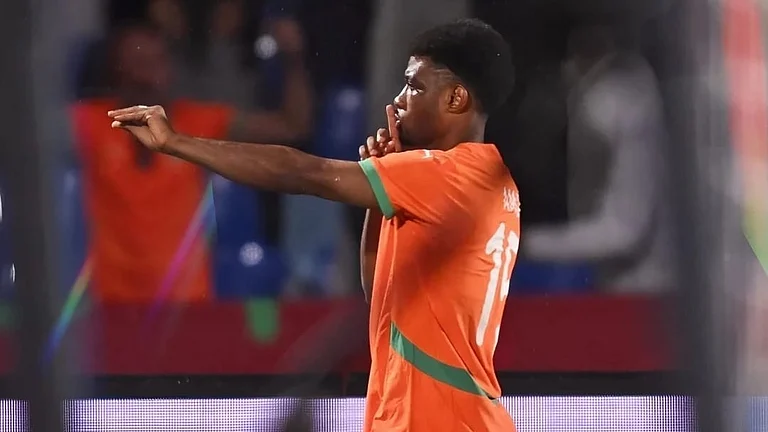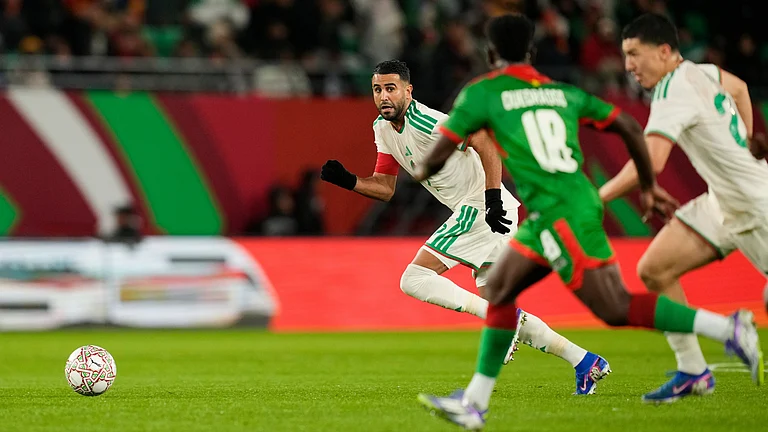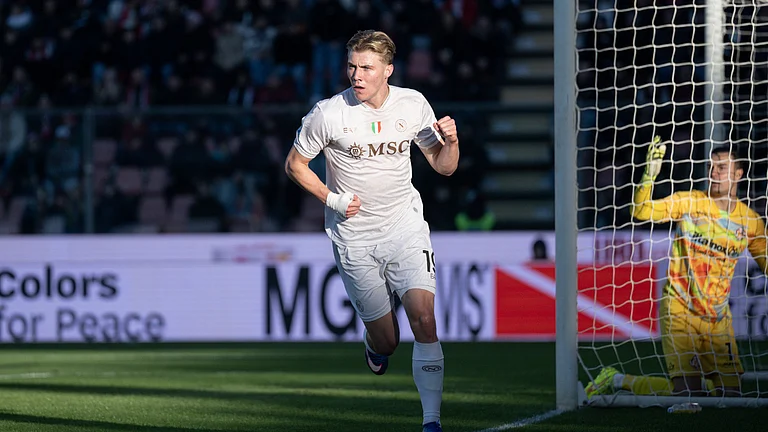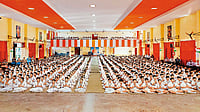- Rahul Gandhi’s nomination from Wayanad has brought attention upon an old Cong ally, the IUML
- Top BJP leaders have used campaign rhetoric to paint the IUML, known to be a moderate party, communal
***
The year is 1962. The Indo-China conflict was at its peak. Muhammad Ismail, the founder of the Indian Union Muslim League (IUML), received a letter from Prime Minister Jawaharlal Nehru. It was in response to Ismail’s offer to send his son Mian Khan to join the armed forces to fight the war against China. Nehru politely declined and instead suggested in the letter that the crisis was going to be prolonged and that his son could instead ‘find some work connected with the war effort in Madras’.
This was a different age in Indian politics. And the answer to why the footnote from history has had to be exhumed lies in the stepping up of election rhetoric in the country to vitriolic levels. The IUML’s ‘secular character’ and ‘nationalism’ is in question after Congress president Rahul Gandhi decided to contest from Wayanad in Kerala, where the Muslim community forms a sizeable population. As the state goes to vote on April 23, the spotlight is on the alliance of the Congress with the IUML.
The reductive rhetoric has picked up on the IUML’s green flags with star and crescent (in pic) to establish a non-existent connection with Pakistan. It’s a game of dangerous generalities that is by now well-known: the viral pics of IUML flags, fluttering alongside Congress flags in Wayanad, demonised for looking like Pakistani flags. And the usual suspects of national politics have jumped in to vilify the party. That there is no basis to this communal rhetoric or that the Pakistani flag actually looks different is beside the point, it is enough to rile up majoritarian voters who are far away from, and disinterested, in context. After the flag pics went viral, UP CM Yogi Adityanath, whom the Election Commission pulled up recently for a communally laced speech, called the IUML a ‘green virus’ while BJP president Amit Shah drew similarities between Pakistan and Wayanad.
Ask Kerala BJP president P.S. Sreedharan Pillai about the statements of his party leaders and he says he can’t comment as the IUML has already complained to the EC regarding Adityanath’s speech. But he adds: “Our stand on the issue is the same as that of our leaders.” Pillai also stoked controversy on April 15 by saying in a rally that one “can identify Muslims by removing their clothes”. The CPI(M) has filed a complaint with the EC against Pillai for his remarks.
To go back to IUML’s history again, its founder Ismail, known as Qaid-e-Millat (leader of the nation), had steered the course for the Indian Muslim League in 1948 after it was formed as a breakaway faction of the All India Muslim League, following Partition. The veteran leader served in the Rajya Sabha from 1952 to 1958 and was elected three times to the Lok Sabha from Kerala, where the party still has its stronghold in the northern region. It has also been a major ally of the Congress-led United Democratic Front (UDF) for the past 40 years.
On the recent statements, historian Irfan Habib explains that the attack on the IUML’s secular character is not out of ignorance; rather, it’s a well-designed move. Even the original Muslim League’s association with Congress runs deep in the freedom movement, says Habib—despite the later fissures and tragic hardening of stands. “The BJP has to look inward to see its own contradictions. Let’s remember that the Muslim League joined the freedom movement while Hindu Mahasabha kept out of it,” he says. “The Muslim League and the Congress agreed on self-government in 1916. And then they worked together in the Non-cooperation movement in 1920-22. It is best to remember that neither the Hindu Mahasabha nor the RSS joined the freedom movement,” Habib adds.
Even though the IUML wields marginal influence in a handful of states, it continues to be a major—and mainstream—force in Kerala and Tamil Nadu. Also, it is the second largest ally of the UDF in Kerala that has been in the fray since the 1960s. The IUML has also allied with the CPI(M) in the state in previous elections, while its leaders have held various ministerial berths in coalition governments.
“The IUML cannot be called and is not a communal organisation. It comprises mostly of nationalist Muslims,” says political scientist K.T. Rammohan. He cites historian M. Gangadharan’s argument that the IUML is a “community organisation” and not a communal one.
Kerala had its first Muslim chief minister when IUML’s C.H. Mohammed Koya occupied the chair for two months in 1979. Koya became the chief minister even though the party had only 11 MLAs. Koya’s son and senior IUML leader M.K. Muneer says that the party has practised a ‘moderate’ politics since its inception. The IUML has always maintained constitutional propriety, says Muneer, a former state minister. He also points out: “When Ambedkar lost the provincial election in Maharashtra, it was the Muslim League that nominated him and got him to the Constituent Assembly through Bengal.”
The party’s stint with national politics came in 2004, when its senior leader E. Ahamed got a ministerial birth in the Manmohan Singh government. The minister was well-respected by BJP leaders too. Muneer points out how former PM Vajpayee entrusted Ahamed to represent India in Geneva. “Ahamed played the key role as negotiator during the Iraq rescue operation in 2004. Also, his help was sought in the Libya hostage crisis in the 1990s when Narasimha Rao was the PM,” Muneer points out.
Political observers say that the party has played a crucial role in bringing the Muslim community to the mainstream. First-generation leaders such as Panakkad Syed Ali Shihab Thangal, Mohammed Koya and K.M. Seethi Sahib focused mainly on empowering Muslims. “The Muslim League brought the community to the mainstream. It empowered them through education. The community in Kerala enjoys better social mobility than Muslims in other parts of the country,” says political observer J. Prabhash.
The party held sway even when it faced the biggest challenge after the demolition of the Babri Masjid in 1992. Although it suffered internal fissures as a section of leaders wanted to sever ties with the Congress, which was the ruling party at the Centre during the demolition. A senior leader, the late Sulaiman Sait, quit the party and formed Indian National League (INL), which is an ally of the CPI(M)-led LDF now.
“When Babri happened, our policy was not to reply in the same coin. Kerala remained peaceful throughout. Our policy was that terror acts shouldn’t be countered in the same vein”, says IUML general secretary K.P.A. Majeed. “At that time, IUML passed a resolution that nobody should disturb harmony and peace,” adds Muneer.
Though the party is known to toe a conservative line, it is known to keep a distance from the more radical Muslim organisations in the state such as the Social Democratic Party of India (SDPI) and the Popular Front of India (PFI). “In reality, extremist elements are not able to pick momentum because of IUML, because of the mellowing role it plays,” says Prabhash. Muneer adds that as a principle, the party has always strived to safeguard the interests of the community and it never gave in to the forces of fundamentalism.
Majeed says a challenge for the IUML came in the 1990s and 2000s with the rise of leaders like Abdul Nazer Mahdani, whose positions were more hard line and who enjoyed a wide support of young Muslims. “We have never indulged in communal politics. The politics of Mahdani and his party, the PDP, was as dangerous as RSS,” says Majeed.


























